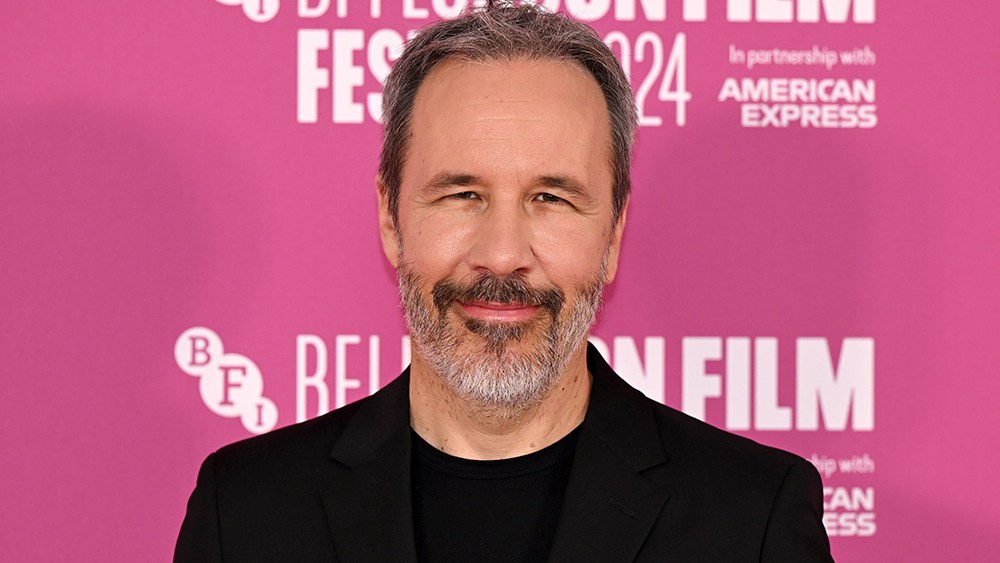Dune 2 Director Denis Villeneuve on Collective Act of Cinema, AI Films
At a special screening of “Dune: Part Two” in London on Sunday, director Denis Villeneuve expressed his appreciation for the collaborative nature of filmmaking, contrasting it with the potential future of AI-generated movies.
“I work with tremendous artists. The thing about cinema I love the most is this collective act of creativity, where you try to make poetry … at the end of the day it is cinema, it is storytelling. It is very moving for me to make it together,” Villeneuve said in conversation with fellow filmmaker Joe Wright. “That is why, if ever one day we came up with … you can create a movie just with a computer, maybe it’s going to be interesting in some ways, but I will absolutely miss the collective act of creativity, which is so beautifully human.”
The director also revealed how his background in biology influenced the film’s creature design, particularly the sandworms. “We were really obsessed with the idea to try to make this beast look as realistic as possible,” Villeneuve said. He and production designer Patrice Vermette studied various animal species to determine how the worms’ skin would withstand the harsh desert environment.
Discussing the balance between intimacy and spectacle, Villeneuve said “‘Part Two’ is a love story, and the whole movie structure is on that love story.” He focused on the relationship between Paul [Timothée Chalamet] and Chani [Zendaya], enhancing scenes during filming to strengthen their connection.
The creation of the Fremen language, Chakobsa, was also highlighted. Linguist David J. Peterson developed a complete language based on “Dune” creator Frank Herbert’s books for the film, with actors attending “Chakobsa school” to master the fictional tongue.
When asked about handling difficult moments during production in general, Villeneuve said, “There’s always at least one day where I’m a shitty director, where it feels like you’re an instrument out of tune.” He underlined the importance of reshooting when necessary, despite initial feelings of shame.
On Saturday, Villeneuve made an appearance at the BFI London Film Festival for a Screen Talk hosted by “Ted Lasso” actor Brett Goldstein. During the conversation, he discussed some of the most memorable moments from his career, including filming “Dune 2’s” epic sandworm-riding scene. Villeneuve confirmed that the shoot for the scene took 44 days, with some shots taking an entire week to get right.
“I realized that, the way I wanted to approach this, I didn’t want to compromise,” Villeneuve said. “Most important with visual effects is, how will you shoot it? And I wanted to shoot it with natural light. And I realized it would take months to shoot it. Each shot was very complex. Each shot took sometimes half a day, sometimes a day, sometimes a week for one shot because of the complexity. If I had done it myself, I would still be shooting.”
In order to film the scene the way he wanted to, Villeneuve created a separate unit on set called the “worm unit,” led by his wife Tanya Lapointe. She “understood perfectly my vision,” Villeneuve said, adding: “She’s my wife, also.”
On Sunday, Villeneuve revisited the experience. During a particularly challenging shot, Villeneuve admitted to a moment of frustration. “The worst thing I said ever, and I will not do it again, is one day [the shot] was not coming out, and I said to Tanya, ‘OK, forget it. I will do it myself.’ Worst thing to say, I apologize. I would never say that again, but the shot came back perfect.”
In April, it was confirmed that there is a third “Dune” movie in development based on Frank Herbert’s “Dune Messiah,” which is set 12 years after the events of his first novel. However, Villeneuve has been clear that the franchise is “not like a trilogy,” as he said on Vanity Fair’s “Little Gold Men” podcast last month.
First, it’s important that people understand that for me, it was really a diptych,” Villeneuve said of the first two “Dune” movies. “It was really a pair of movies that will be the adaptation of the first book. That’s done and that’s finished. If I do a third one, which is in the writing process, it’s not like a trilogy. It’s strange to say that, but if I go back there, it’s to do something that feels different and has its own identity.”


